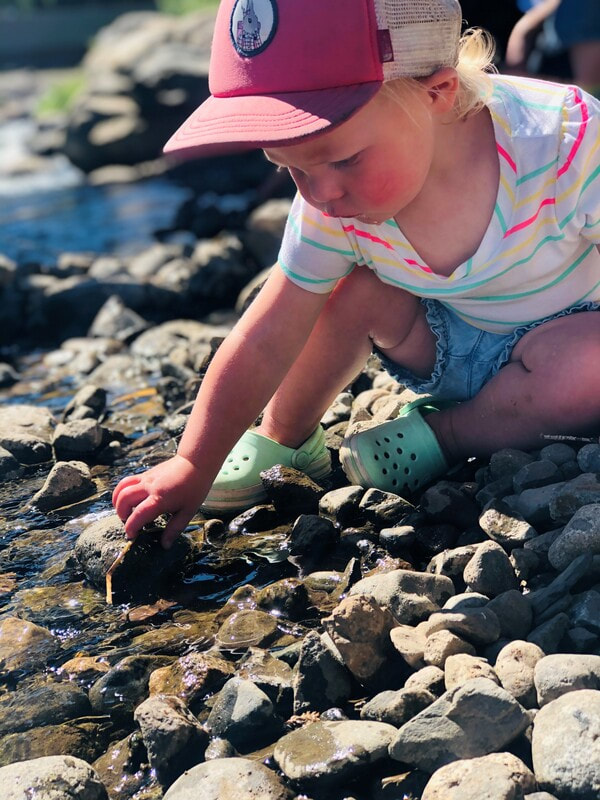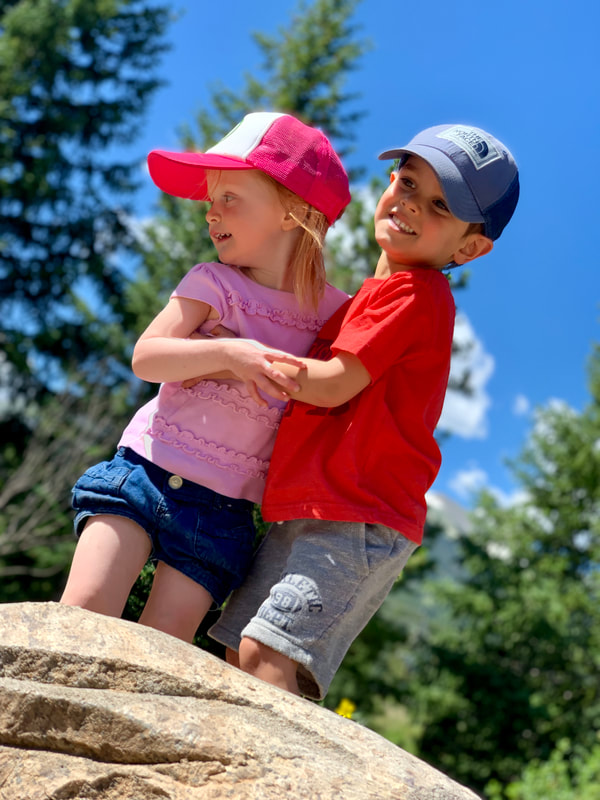SproutsRatio: 1:3 | Kids: 6 | Age: Early infantsWe welcome our youngest children in the Sprouts classroom. The babies are provided nourishment and naps on demand and we collaborate with the parents to ensure we are providing consistency between home and school. Even at this young age we recognize the importance of the children’s contribution to our school wide community and honor and respect their early efforts to make meaning of the world around them. We introduce sign language here to offer the children means to communicate with their caretakers and promote that bond. We strive to provoke curiosity through a variety of materials presented throughout the day.
|
SeedlingsRatio: 1:3 | Kids: 6 | Age: Late InfantsIn our Seedlings classroom, children are becoming aware of their teachers and the other children who share their days with them. They are eager to gain gross and fine motor confidence and they observe and imitate the children who have these competencies. As the children become aware of the learning community that is developing around them, they are encouraged to become contributing members. They may take turns choosing which way to follow a path, what song to sing at morning meeting, or what natural item can be substituted for a paintbrush during the morning’s exploration. Sign language continues to be encouraged to promote communication between the children, their peers and the staff.
|
AcornsRatio: 1:4 | Kids: 8 | Age: Early ToddlersOur Acorn classroom hosts a group of children who are eager to meet each new challenge they encounter. These children are developing greater self awareness and gaining confidence in the ever changing ability of their bodies. As they begin to learn self-regulation skills they are offered opportunities throughout the day to focus on their blossoming social/emotional growth. The self confidence that emerges from these meaningful interactions supports their ability to succeed as a member of the learning community. A wide variety of open ended materials are accessible in the classroom throughout the day, allowing the children opportunities to make sense of their role in the ever evolving environment around them.
|
|
Little GroveRatio: 1:8 | Kids: 16 | Age: Early PreschoolOur Little Grove classroom is filled with children who are incredibly imaginative and utilize the wealth of materials in the art studio as well as the dress up supplies to express themselves. These children draw upon real life experiences from their community, their families, and the natural world to help understand the provocations set before them each day. They take an active role in conceptualizing long term investigations and engage in ongoing dialogue as they gain understanding of the subject matter. These children have begun to develop rich and supportive friendships and regularly seek out social interactions with these special peers.
|
Big GroveRatio: 1:8 | Kids: 16 | Age: Late PreschoolOur Big Grove classroom is host to our most mature learners. The focus in Big Grove is on helping children become creative, confident, self-motivated, and inquisitive learners who can function adeptly within a social group. Students and teachers are truly co-collaborators as long-term investigations are based on student interests and are guided towards specific learning skill sets, such as critical thinking, effective communication, problem-solving, trial and error, hypothesizing, and theorizing. In the Big Grove, student’s learning culminates into kindergarten preparation and a thirst for knowledge.
|
Location: |
About Timberline:
We are a school for young children from ages 6 weeks to 6 years. Our approach is Reggio Emilia inspired. The following principles guide our approach and curriculum: The child is an active, strong, competent collaborator in the evolution of their learning. The teacher is a guide, rather than an instructor, who observes, questions, researches, documents, reflects, and interprets. The classroom is a teacher unto itself! The relationships that develop between the children, their families, and the teachers create opportunity for growth, reflection, and support. Long-term projects are at the core of our program, using the children’s interests, and the teacher’s observations, as the guide.
|





